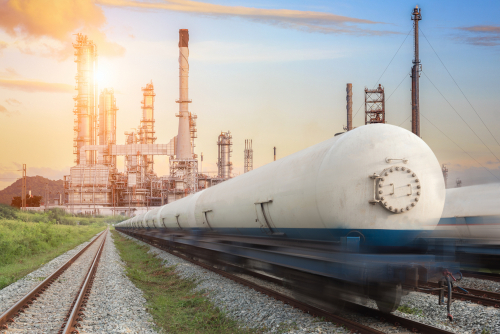
Concerned about a potentially rushed process to allow liquefied natural gas (LNG) to be transported by rail in the face of safety risks, U.S. Reps. Peter DeFazio (D-OR) and Tom Malinowski (D-NJ) have written the Pipeline and Hazardous Materials Safety Administration (PHMSA) asking for permitting updates and a revised draft permit.
The PHMSA was considering a special permit for Energy Transport Solutions, LLC to move LNG by rail. A public comment period on the proposal closed on Aug. 7 and no further moves have been made.
DeFazio, chair of the House Committee on Transportation and Infrastructure, has requested numerous documents related to the application in the past, and requested that the operating conditions that PHMSA and the Federal Railroad Administration are considering for the permit be made available to the public.
“This letter requests that, if PHMSA is still considering the special permit process to allow Energy Transport Solutions, LLC (ETS) to transport LNG by rail tank car before it receives the results of these safety studies, a revised draft special permit be posted to the public docket with FRA and PHMSA’s proposed operating conditions before any special permit is finalized,” the Congressmen wrote to PHMSA Administrator Howard Elliott. “This would ensure that the public and interested parties are able to adequately consider these operating conditions along with the safety risks associated with the proposed movement.”
They noted that PHMSA has, since a previous letter written to them, posted a redacted version of the ETS application for LNG transportation, allowing ETA to withhold its shipping experience and incident record from the public. The congressmen said the quantitative risk analysis provided by the PHMSA only analyzed a limited area, rather than all the intended areas this decision might affect.
“The requested special permit presents unique and substantial risk to the safety of the public and the environment,” the congressmen wrote. “Should even one rail tank car get punctured, the results could be catastrophic. Due to LNG’s cold temperature, if it were to spill near an ignition source, the evaporating gas can burn above the LNG pool, resulting in a pool fire that would spread as the LNG pool expanded away from its source; such a pool fire is intense, burning far more hotly and rapidly than crude oil or gasoline fires, and cannot be extinguished. The risks of such an incident include thermal radiation. As PHMSA’s own draft environmental statement acknowledges, a BLEVE [boiling liquid expanding vapor explosion] event is also possible, which could impact individuals up to one mile away from the explosion.”